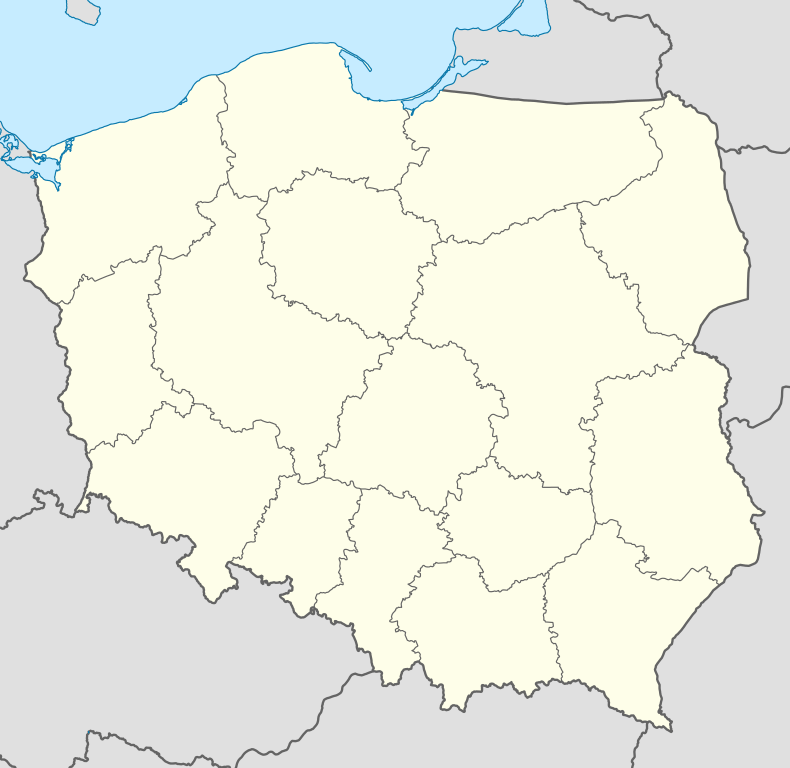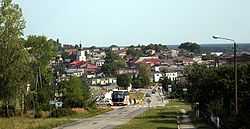Woźniki
| Woźniki | ||
|---|---|---|
|
Panorama of the town | ||
| ||
 Woźniki | ||
| Coordinates: 50°35′N 19°3′E / 50.583°N 19.050°E | ||
| Country |
| |
| Voivodeship | Silesian | |
| County | Lubliniec | |
| Gmina | Woźniki | |
| City rights | 1386 | |
| Government | ||
| • Mayor | Alojzy Stanisław Cichowski | |
| Area | ||
| • Total | 30.42 km2 (11.75 sq mi) | |
| Population (2006) | ||
| • Total | 4,410 | |
| • Density | 140/km2 (380/sq mi) | |
| Time zone | CET (UTC+1) | |
| • Summer (DST) | CEST (UTC+2) | |
| Postal code | 42-289 | |
| Car plates | SLU | |
| Website | http://www.wozniki.pl | |
Woźniki [vɔʑˈniki] (German: Woischnik) is a town in Lubliniec County, Silesian Voivodeship, Poland, with 4,420 inhabitants (2004).
It is situated in the historic Upper Silesia region, close to the border with Lesser Poland. According to legend, a Silesian fortress on the nearby Grojec mountain was devastated during the Mongol invasion of Poland in 1241, whereafter the inhabitants moved to the present location. Nevertheless the settlement was first mentioned in a 1206 deed issued by Bishop Fulko of Kraków. It received market rights from the Upper Silesian Dukes of Opole, town privileges were confirmed by Duke Bernard of Niemodlin in 1454.
With most of Silesia it was annexed by Prussia in 1742, and after the Napoleonic Wars became an important border town close to Russian Congress Poland —Emperor Alexander I passed it on his way to the 1815 Congress of Vienna. The Woischnik estates were a possession of the Henckel von Donnersmarck noble family until the town passed to the Silesian Voivodeship of the Second Polish Republic upon the Upper Silesia plebiscite in 1921.
Woźniki is to receive access to the planned A1 autostrada from Częstochowa to Bytom.
External links
| ||||||||||||
| Wikimedia Commons has media related to Woźniki. |

